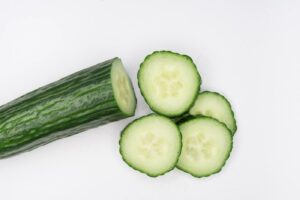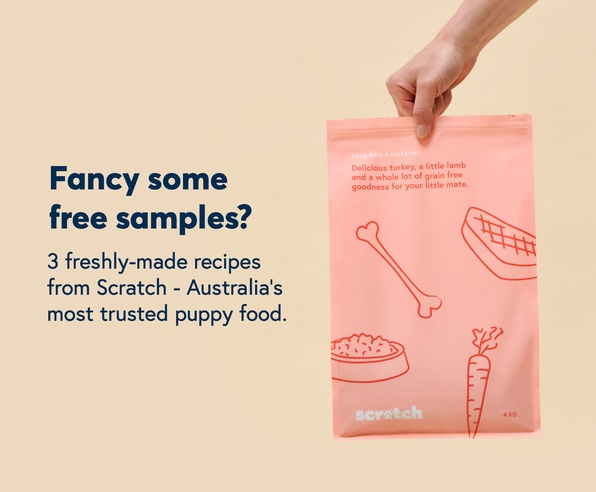You might just be curious – or your dog might have just executed an exquisite open-mouthed dive towards that banana you dropped.
Dogs are brilliant kitchen assistants, licking clean every food-shaped spot without complaint. While this is usually to our (and their) benefit, dogs aren’t quite as discerning between something delicious and something indigestible.
If that something was yellow and banana shaped, you’ve come to the right place.
The short answer: Yes!
Feeding fruit to dogs can be tricky business, with so many hiding unhealthy or even toxic ingredients. If you’re wondering “can dogs eat bananas safely?” we’ve got good news for you.
Fed responsinsibly, bananas are a guilt-free treat that’s packed full of good stuff. Bananas are a snack you can get creative with: chopped, mashed, frozen or mixed with other delicious dog-safe ingredients. Besides being cautious with the peel, they’re a completely safe treat from top to bottom.
Beyond being just safe to consume, bananas are a richly nutritious fruit with loads of nourishing vitamins. Vitamin C and Biotin will bolster your dog’s immune system while supporting a thriving skin and coat. Magnesium and potassium will promote bone density (for strong bones!) and keep kidney function flowing. And very importantly, bananas are teeming with fibre that can resolve chronic 💩 issues like diarrhoea and constipation.
Can puppies eat bananas?
Vet Explains Pets recommends avoiding bananas until your pup is 12 weeks old. Baby puppies can struggle with fruit, but from 4 months on it’s safe to start introductions.
Beyond 12 weeks old, both puppies and adult dogs can have bananas as a snack. But since puppies have such specific nutrient needs to support their growth, we always recommend feeding treats & extras in moderation.
Fed occasionally, bananas are a perfectly safe snack for your puppy, alongside their nutritionally balanced and age appropriate puppy food.
When are bananas bad for dogs?
You know how apples and bananas are totally delicious while celery tastes like a big bite of green water? This is mostly due to fructose.
Fructose is fruit sugar, which bananas are high in. Given in excess fructose consumption can contribute to obesity and diabetes, which are obviously best avoided. For this reason it’s recommended that diabetic dogs steer clear of bananas, as keeping blood sugar levels stable is their primary concern (Pets WebMD, 2020).
While we consider the fibre content of bananas a bonus, too much fibre can actually be detrimental to gut health; just another reason to enjoy bananas in safe moderation.
Can dogs eat banana peels?
Banana peels aren’t poisonous (phew), but feeding them to your dog isn’t recommended. They’re densely packed full of fibre, and with their tough texture can pose a significant choking or intestinal blockage risk. Save the peel for your compost bin instead. ♻️
Can dogs eat banana chips?
It’s best not to, if you’re thinking of banana chips you buy bagged from the grocery store. They’re usually infused with loads of additional sugar, plus artificial preservatives to keep them fresh for longer. But if you’re a whiz in the kitchen, you can always cook up a two-ingredient batch of dog-friendly banana chips that both you and your dog can munch on.
How much banana can my dog eat?
Keep bananas in the ‘occasional treat’ category. Pumpkin Pet Insurance suggests large dogs should splurge on ½ a banana or less per day, while small dogs stick to one or two small pieces. Sorry, smallfries.
How to prepare bananas for dogs
Bananas are just begging you to get creative with them. 🎨
Frozen bananas are brilliant for summer days and serve as a perfect ice-cream substitute. Mash them up and pop them into an icy pole mould, a Kong toy or a slow feeder and your pup will be occupied for ages.
To avoid over-enthusiastic scoffing, it’s best to slice bananas into easily digestible pieces.
Can dogs eat bananas for diarrhoea?
The rich fibre content in ‘nanas also serves as a natural remedy for diarrhoea. Like gut health cheerleaders, bananas encourage digestive mobility and eases the way for tricky food to move through the intestinal system (First Vet, 2021).







